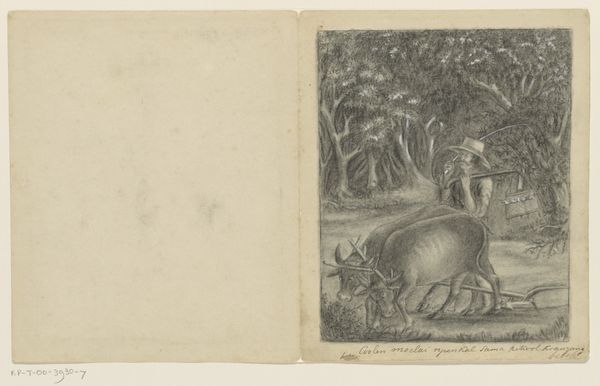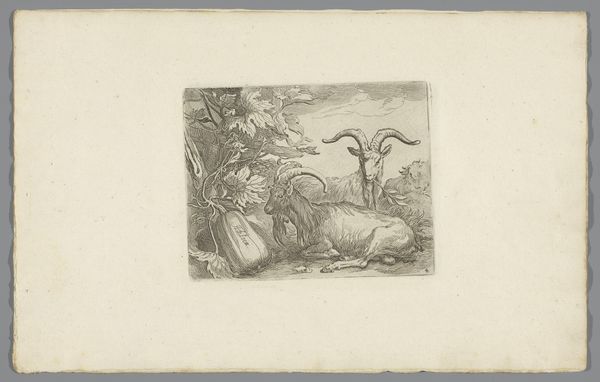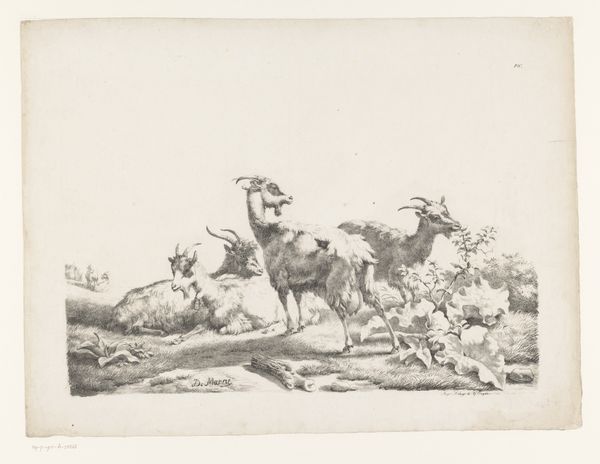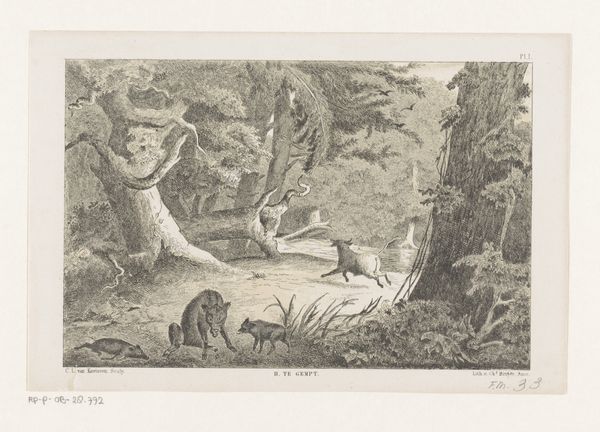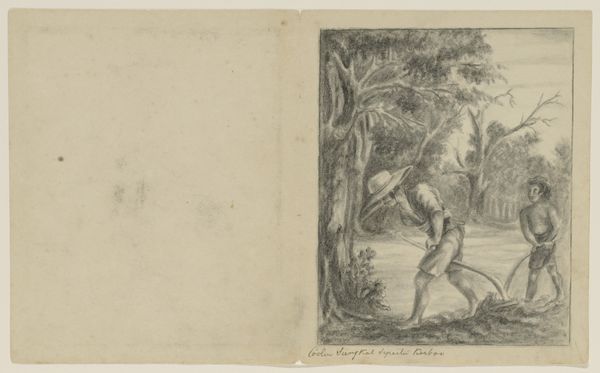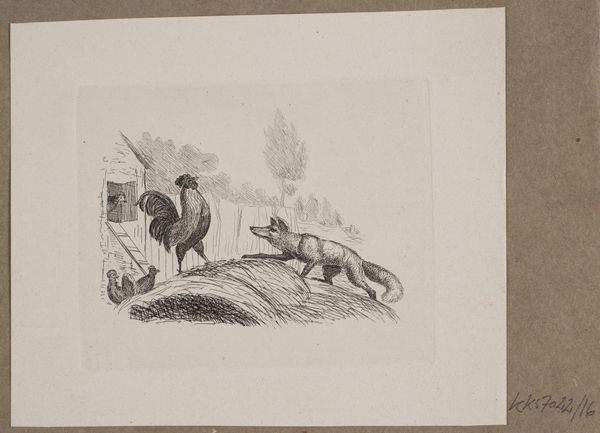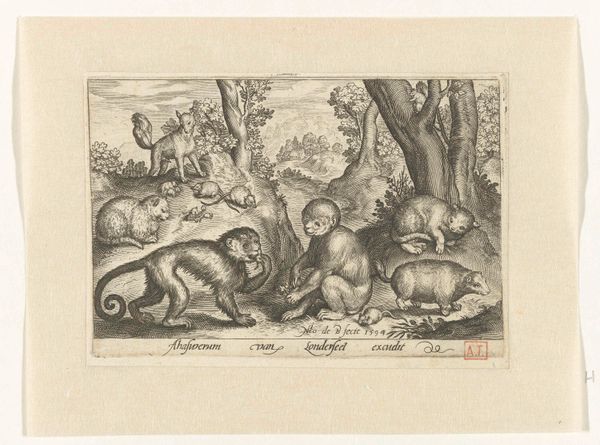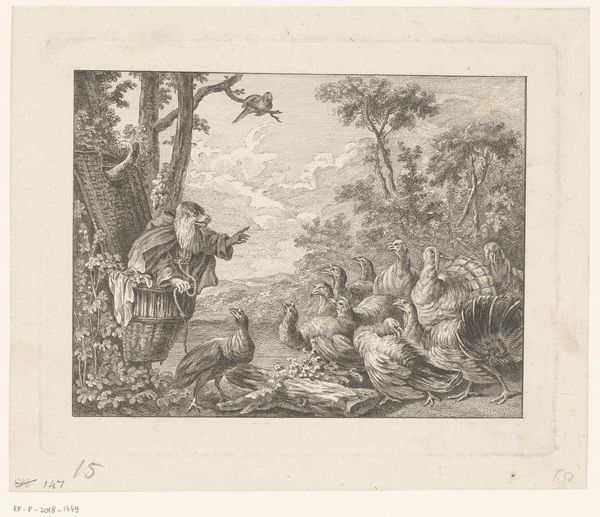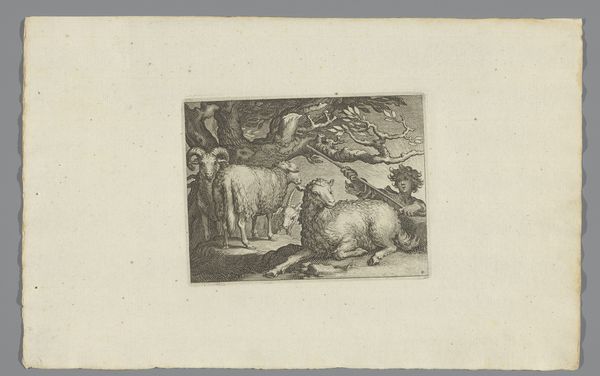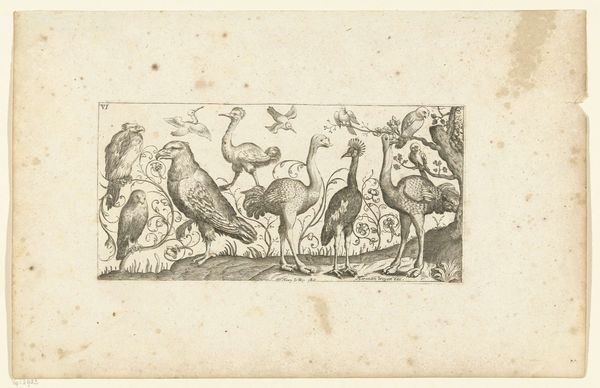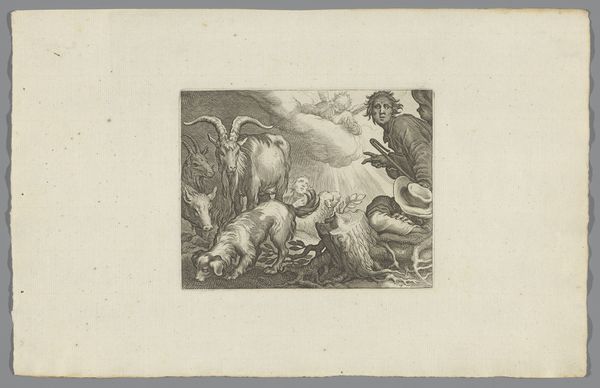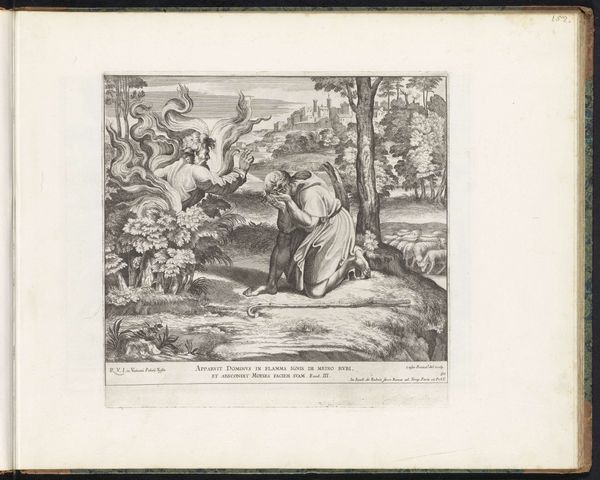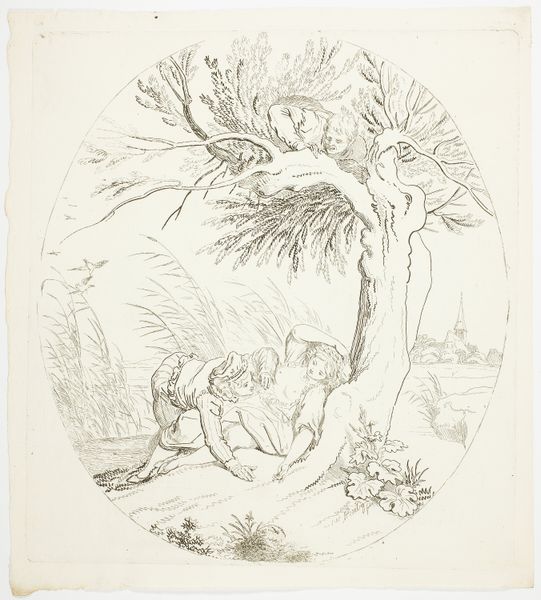
print, etching, engraving
#
baroque
# print
#
pen sketch
#
etching
#
old engraving style
#
ink drawing experimentation
#
genre-painting
#
engraving
Dimensions: height 82 mm, width 129 mm
Copyright: Rijks Museum: Open Domain
Curator: Here we have "Wild Boar, Foxes, Beaver, Porcupine and Frogs," an etching and engraving attributed to Nicolaes de Bruyn, dating sometime between 1594 and 1656. Editor: What a delightfully strange gathering. There's a stillness despite the wild subjects; it’s almost dreamlike in its composition. The soft greys and delicate lines create a fantastical atmosphere, a little world teeming with… suspicion? Curator: The depiction of animals, particularly in this rather loose, almost whimsical manner, tells us something about the relationship between humans and the natural world in the Netherlands at that time. These were creatures both familiar and unknown. Editor: There's a strong element of class politics at play, wouldn't you agree? Hunting, often a sport for the elite, granted power over nature. The gathering depicted seems like an indictment against the hunting craze? Curator: Possibly, though it’s equally likely to be reflecting upon older traditions of the fable, which was hugely popular in the moralising literature of the era, these animals play stock characters in common stories. Editor: Yes, and who are the stories for? Who gets to cast judgement? Note that while this appears "natural," each creature is clearly defined by learned features and recognizable social symbols and meanings. The spiky porcupine is dangerous, the sly fox sneaky, the toad? And is the beaver industrious or something to harvest? Curator: What is especially intriguing is how De Bruyn mixes observational drawing with established iconographies. We've an element of study but it serves a representational project rooted in social dynamics and philosophical questions about place and nature. Editor: De Bruyn delivers an unusual, thought-provoking, even confrontational tableau that is not nearly as rustic as one might at first expect. It raises issues of control and identity with a lasting legacy for artists examining issues of gender, race, and environment today. Curator: A vital, perhaps unsettling reminder that art isn't produced in a vacuum; it mirrors society's obsessions and uncertainties.
Comments
No comments
Be the first to comment and join the conversation on the ultimate creative platform.
